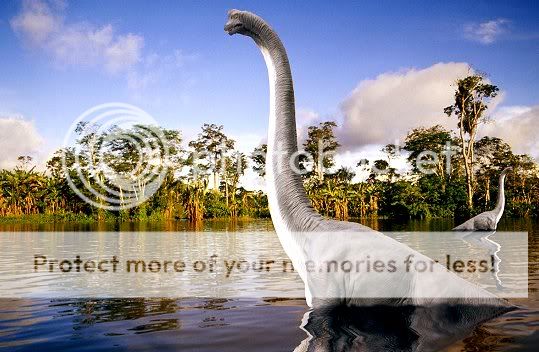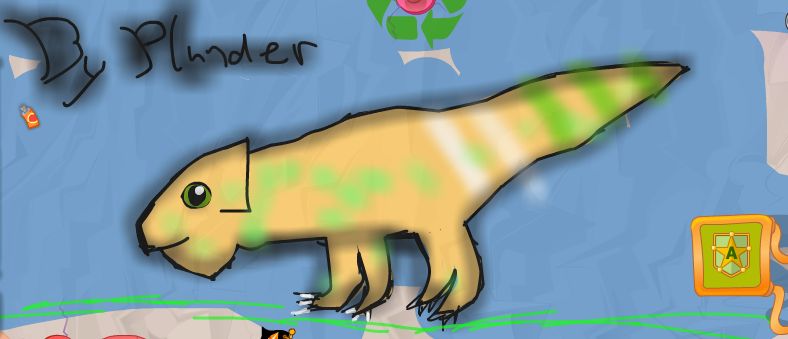 by flying_hawk Fri Oct 23, 2009 2:56 pm
by flying_hawk Fri Oct 23, 2009 2:56 pm
Dinosaur Facts
Dinosaurs were animals that lived millions of years ago.
Many dinosaurs were very big. But some were as small as chickens are today.
Most dinosaurs ate only plants. Some dinosaurs ate other animals. They were meat eaters.
Scientists aren't sure what color dinosaurs were. Some think dinosaurs might have been as colorful as many birds are today.
In 1902, part of a huge skeleton was uncovered in Montana. Later, another was found in Wyoming. From these bones the American paleontologist Henry Fairfield Osborn drew up the first pictures of this giant creature. He named it Tyrannosaurus Rex (meaning 'king of the tyrant reptiles') because it was the biggest meat - eating dinosaur then known to have lived on Earth.
Scientists in Argentina, South America, claim to have found the world's oldest dinosaur. This creature, called Herrarasaurus, is said to be 230 million years old.
Dinosaurs sometimes had accidents, and fossil bones have been found with fractures in them.
The most complete skeleton of a Stegosaurus ever found has been dug up at the foot of the Rocky Mountains in Colorado. It had to be hauled out of the earth by an army helicopter.
Your dentist's drill has other uses. In the laboratory, scientists often use dental drills to clear and prepare dinosaur bones.
Tracks left in the mud by dinosaurs provide clues as to how quickly they moved. By measuring the distance between footprints, experts have worked out that some dinosaurs could have reached speeds up to 25 mph.
Velociraptor was probably very fierce. A fossil found in Utah, shows its claws may have been up to 15 inches in length--as long as a three-year-old child's arm. These claws formed very effective hooks with which to hold prey.
Main article: Evolution of dinosaurs
Dinosaur evolution after the Triassic follows changes in vegetation and the location of continents. In the Late Triassic and Early Jurassic, the continents were connected as the single landmass Pangaea, there was a worldwide dinosaur fauna mostly composed of coelophysoid carnivores and prosauropod herbivores. Gymnosperm plants (particularly conifers), a potential food source, radiated in the Late Triassic. Prosauropods did not have sophisticated mechanisms for processing food in the mouth, so must have employed other means of breaking down food farther along the digestive tract. The general homogeneity of dinosaurian faunas continued into the Middle and Late Jurassic, where most localities had predators consisting of ceratosaurians, spinosauroids, and carnosaurians, and herbivores consisting of stegosaurian ornithischians and large sauropods. Examples of this include the Morrison Formation of North America and Tendaguru Beds of Tanzania. Dinosaurs in China show some differences, with specialized sinraptorid theropods and unusual, long-necked sauropods like Mamenchisaurus. Ankylosaurians and ornithopods were also becoming more common, but prosauropods had become extinct. Conifers and pteridophytes were the most common plants. Sauropods, like the earlier prosauropods, were not oral processors, but ornithischians were evolving various means of dealing with food in the mouth, including potential cheek-like organs to keep food in the mouth, and jaw motions to grind food.[40] Another notable evolutionary event of the Jurassic was the appearance of true birds, descended from maniraptoran coelurosaurians.
An Illustration of 18 species of basal ceratopsia to scale.
By the Early Cretaceous and the ongoing breakup of Pangaea, dinosaurs were becoming strongly differentiated by landmass. The earliest part of this time saw the spread of ankylosaurians, iguanodontians, and brachiosaurids through Europe, North America, and northern Africa. These were later supplemented or replaced in Africa by large spinosaurid and carcharodontosaurid theropods, and rebbachisaurid and titanosaurian sauropods, also found in South America. In Asia, maniraptoran coelurosaurians like dromaeosaurids, troodontids, and oviraptorosaurians became the common theropods, and ankylosaurids and early ceratopsians like Psittacosaurus became important herbivores. Meanwhile, Australia was home to a fauna of basal ankylosaurians, hypsilophodonts, and iguanodontians. The stegosaurians appear to have gone extinct at some point in the late Early Cretaceous or early Late Cretaceous. A major change in the Early Cretaceous, which would be amplified in the Late Cretaceous, was the evolution of flowering plants. At the same time, several groups of dinosaurian herbivores evolved more sophisticated ways to orally process food. Ceratopsians developed a method of slicing with teeth stacked on each other in batteries, and iguanodontians refined a method of grinding with tooth batteries, taken to its extreme in hadrosaurids. Some sauropods also evolved tooth batteries, best exemplified by the rebbachisaurid Nigersaurus.
There were three general dinosaur faunas in the Late Cretaceous. In the northern continents of North America and Asia, the major theropods were tyrannosaurids and various types of smaller maniraptoran theropods, with a predominantly ornithischian herbivore assemblage of hadrosaurids, ceratopsians, ankylosaurids, and pachycephalosaurians. In the southern continents that had made up the now-splitting Gondwana, abelisaurids were the common theropods, and titanosaurian sauropods the common herbivores. Finally, in Europe, dromaeosaurids, rhabdodontid iguanodontians, nodosaurid ankylosaurians, and titanosaurian sauropods were prevalent. Flowering plants were greatly radiating, with the first grasses appearing by the end of the Cretaceous.[42] Grinding hadrosaurids and shearing ceratopsians became extremely diverse across North America and Asia. Theropods were also radiating as herbivores or omnivores, with therizinosaurians and ornithomimosaurians becoming common.
The Cretaceous–Tertiary extinction event, which occurred approximately 65 million years ago at the end of the Cretaceous period, caused the extinction of all dinosaurs except for the birds. Some other diapsid groups, such as crocodylians, lizards, snakes, sphenodontians, and choristoderans, also survived the event.
*********HERE IS A PIC OF A DINO**********
http://updatedchobotnews.files.wordpress.com/2009/10/dino.jpg?w=450&h=262
http://updatedchobotnews.files.wordpress.com/2009/10/dino.jpg?w=450&h=262
http://updatedchobotnews.files.wordpress.com/2009/10/dino.jpg?w=450&h=262
http://updatedchobotnews.files.wordpress.com/2009/10/dino.jpg?w=450&h=262

 Interesting Facts about Dinosaurs
Interesting Facts about Dinosaurs






 dinasours
dinasours




















 dinosaurs
dinosaurs
 Re: Interesting Facts about Dinosaurs
Re: Interesting Facts about Dinosaurs
 Re: Interesting Facts about Dinosaurs
Re: Interesting Facts about Dinosaurs
 Re: Interesting Facts about Dinosaurs
Re: Interesting Facts about Dinosaurs







 Re: Interesting Facts about Dinosaurs
Re: Interesting Facts about Dinosaurs


 Re: Interesting Facts about Dinosaurs
Re: Interesting Facts about Dinosaurs
 Re: Interesting Facts about Dinosaurs
Re: Interesting Facts about Dinosaurs
 Re: Interesting Facts about Dinosaurs
Re: Interesting Facts about Dinosaurs
 Re: Interesting Facts about Dinosaurs
Re: Interesting Facts about Dinosaurs


 Re: Interesting Facts about Dinosaurs
Re: Interesting Facts about Dinosaurs
 Dinousaur Facts (4 you hiki)
Dinousaur Facts (4 you hiki)
 Re: Interesting Facts about Dinosaurs
Re: Interesting Facts about Dinosaurs and heres another pic of a dino
and heres another pic of a dino 

 Re: Interesting Facts about Dinosaurs
Re: Interesting Facts about Dinosaurs
 Re: Interesting Facts about Dinosaurs
Re: Interesting Facts about Dinosaurs


 Re: Interesting Facts about Dinosaurs
Re: Interesting Facts about Dinosaurs
 T-Rex
T-Rex


 Re: Interesting Facts about Dinosaurs
Re: Interesting Facts about Dinosaurs